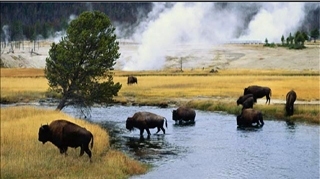|
Celery Farms at
Kearney
From the Archives
[notes on 3x5 cards]
Semi-Weekly Hub – 6 Sept 1891, p 4, col. 3
Story about J. H. Black & Sons’ celery farm. Also occasional
mention through Oct & Nov celery shipments leaving Kearney.
Kearney New Era Standard – 6 Sept 1895, p 4, col 1
Kearney’s celery growers are shipping their products by the
ton.
[Buffalo Tales – Nov-Dec 1998]
“Kearney 100 Years Ago – Part II”
Picture of vegetables at the county fair with bunches of
celery prominent in the foreground. Celery arranged in a
standing position. Stalks appear to be a little slimmer than
they are today, otherwise the appearance is the same.
[clipping]
Hub – 1 Oct 1963 article about celery production in Kearney
Bunches of celery were tied into bundles of 12 for shipping.
Celery Production a Thriving Enterprise in Platte Valley
from 1880’s to 1900’s
WW Gavin was one of the producers
15-18 car loads sold through a Kansas City commission firm.
Grown on bottom land south of Kearney
White plume variety large. Other varieties developed later
were less stringy
Lot sold through local stores. Some store owners were also
growers. Others sold through eastern commissions.
Apparently production stopped because many national firms
who bought Platte Valley celery purchased their
own
land – a lot in Colorado.
One problem was completing harvest before first frost. Tried
to harvest in cool weather just ahead if frost.
Other growers –
Bill
Keller
Charles
W. Hall (one time Kearney mayor)
Henderson Black [see Kuhn Bros, blacksmith],
William
Didrickson
1894 Hub article –
First known
raised by J. H. Black on island south of Kearney 12 years
ago [1882]
By 1894 by
trial and error he had an extensive business going
In 1894 he was shipping 150 dozen bunches per day and
at the height of the season 500 dozen bunches per
day – his top production limit.
Celery is
blanched before it is cut and sold.
10” high boards are placed on each side of a row, pressed
close to the plants.
Shuts out light and celery starts to whiten but keeps on
growing and “takes on the delicious nutty flavor.”
|

